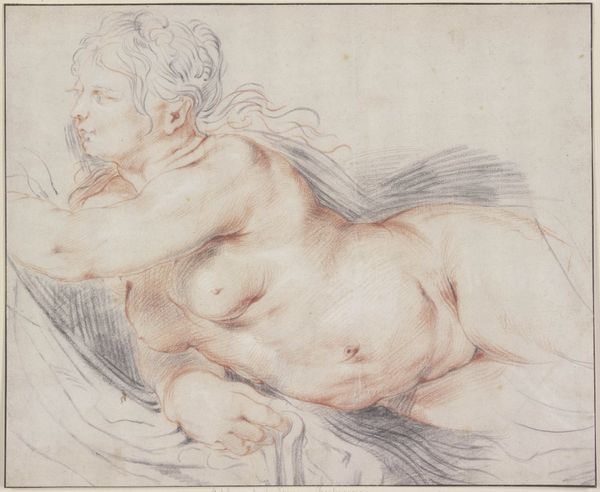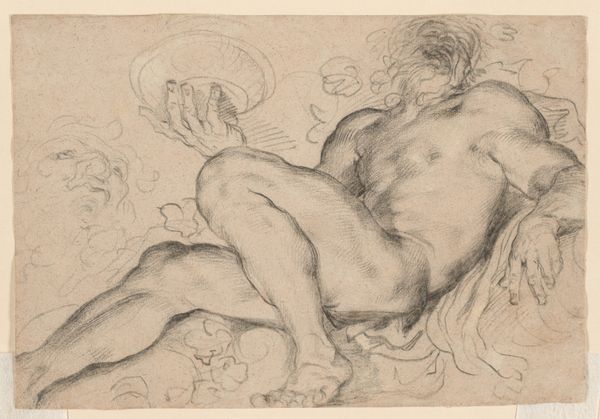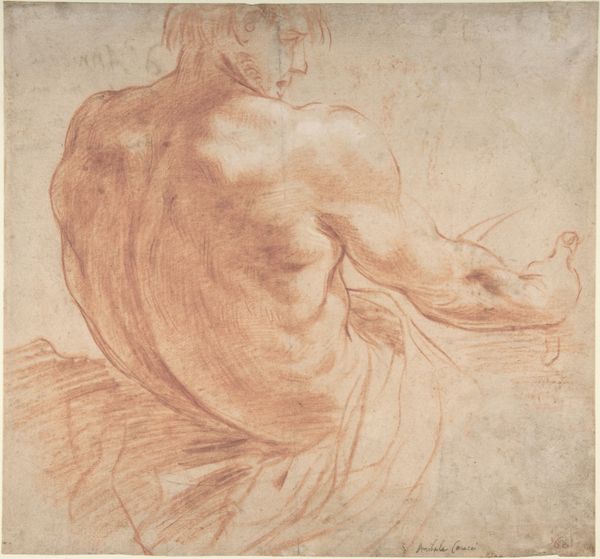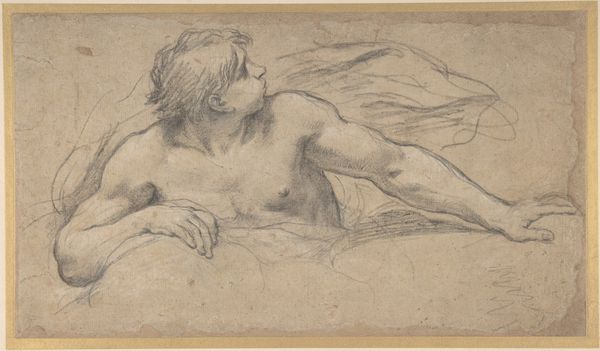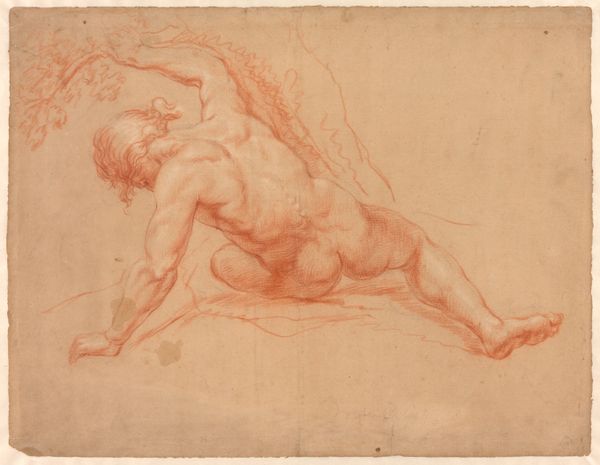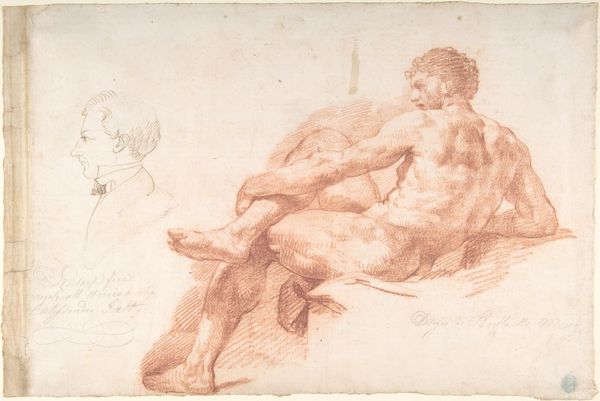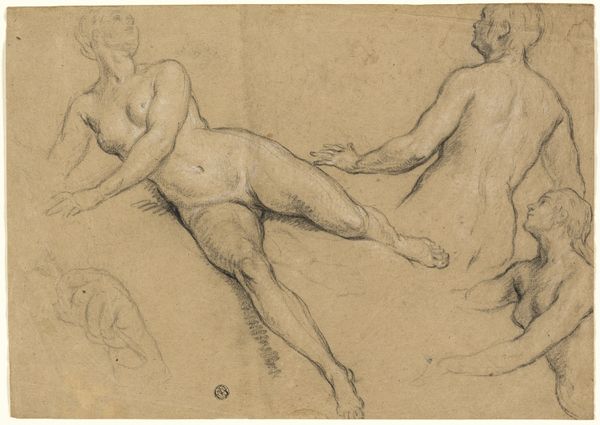
drawing, paper, ink
#
portrait
#
drawing
#
baroque
#
paper
#
ink
#
pencil drawing
#
portrait drawing
#
nude
Dimensions: 154 mm (height) x 182 mm (width) (bladmaal)
Curator: Willem Panneels created this striking ink drawing, "Halvt laenende kvinde, efter 'Lukretia'", sometime between 1628 and 1630. The work resides here at the SMK, Statens Museum for Kunst. Editor: There's a palpable sense of urgency and tension. The reddish-brown ink lends the piece an almost bloodlike quality. What draws me is the raw expression conveyed through the stark contrasts and visible strokes. Curator: Panneels was working within the Baroque tradition, characterized by its drama and emotional intensity, although primarily he is known for prints and his connections to Rubens’ workshop. This drawing, described as “after Lucretia”, aligns with the period’s interest in classical narratives but also their reinterpretation and moral lessons. We see the tragedy reflected, or prefigured, here. Editor: Looking closer at the materials and their application, one can imagine Panneels rapidly sketching. There's something really dynamic in how the medium, just paper and ink, facilitates such expression of form, and that gesture emphasizes a narrative about this woman’s experience. How did the museum acquire this relatively uncommon medium from this artist? Curator: The acquisition history shows a more circuitous route. The artwork entered the Royal Collection as part of a larger group of drawings and prints, reflecting the monarchy's interest in artistic production of the time and later transferred into the museum collection. So it came to the public via the institution, solidifying the value of it for future generations. Editor: What really intrigues me is how Panneels renders the human form. The lines create an immediate tactile presence. You almost feel the weight and texture. It connects us back to the artist's studio, the craft and physical labour behind such art, that some consider lesser for being only ‘on paper’. Curator: I see your point, and yet that very label of "drawing" shaped its reception for centuries. It circulated primarily amongst artists and collectors, serving as a model or study piece. The institutional support here gives Panneels greater cultural permanence, broadening the way his skills impact artistic conversation. Editor: Seeing it now, the labor feels right here and visible to our ears and eyes. Curator: A fine final observation for those in our audience as they experience art history here and today.
Comments
No comments
Be the first to comment and join the conversation on the ultimate creative platform.
